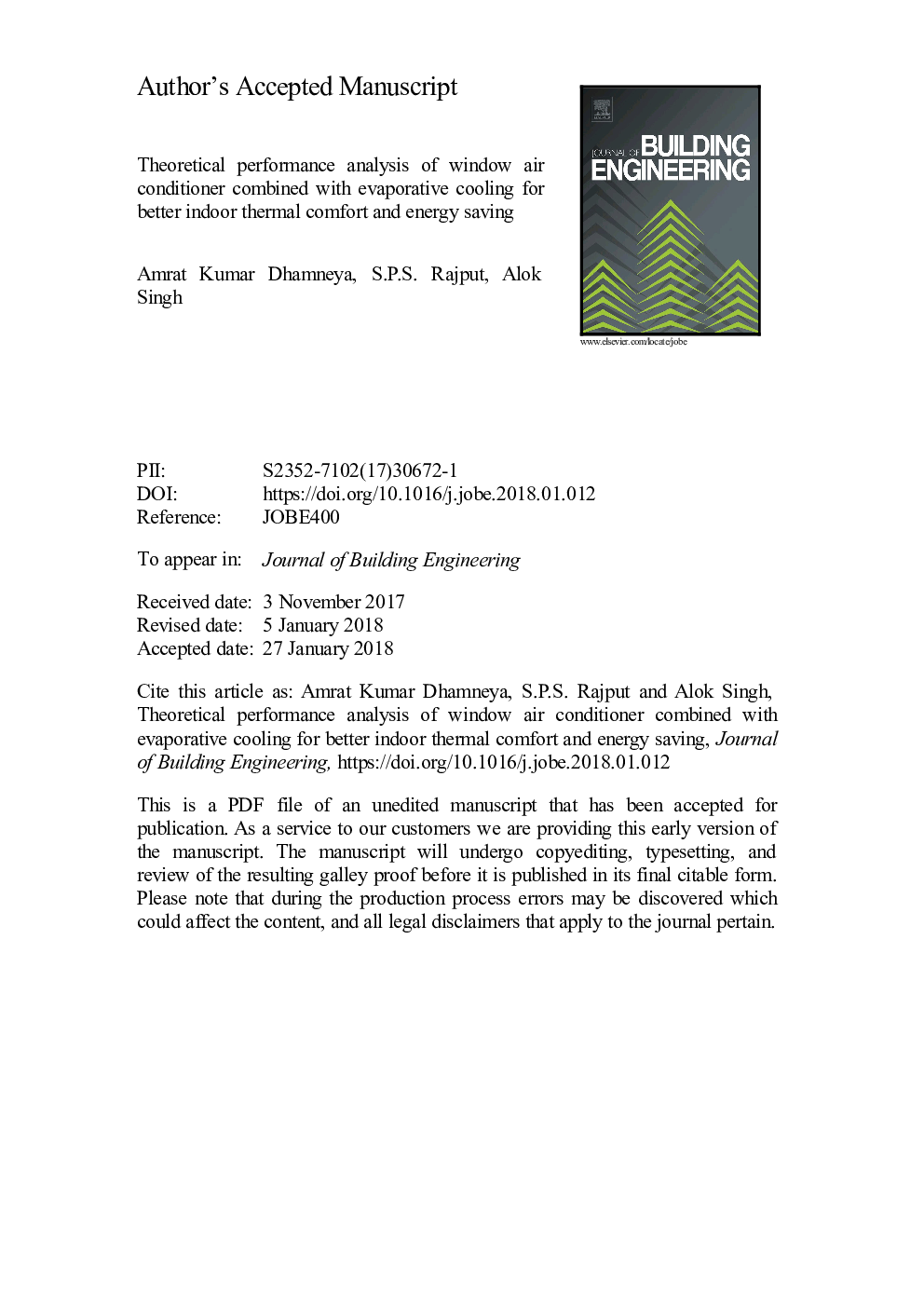| کد مقاله | کد نشریه | سال انتشار | مقاله انگلیسی | نسخه تمام متن |
|---|---|---|---|---|
| 6749909 | 1430631 | 2018 | 30 صفحه PDF | دانلود رایگان |
عنوان انگلیسی مقاله ISI
Theoretical performance analysis of window air conditioner combined with evaporative cooling for better indoor thermal comfort and energy saving
ترجمه فارسی عنوان
تجزیه و تحلیل عملکرد نظری پنجره تهویه مطبوع همراه با خنک کننده تبخیر برای راحتی ترمینال حرارتی داخلی و صرفه جویی در انرژی
دانلود مقاله + سفارش ترجمه
دانلود مقاله ISI انگلیسی
رایگان برای ایرانیان
کلمات کلیدی
موضوعات مرتبط
مهندسی و علوم پایه
سایر رشته های مهندسی
مهندسی عمران و سازه
چکیده انگلیسی
In hot & dry climate conditions, the humidity level of the supplied air w.r.t. the conditioned space is not sufficient to meet the required human comfort. Such extreme climate, which normally exists for about four months in a year affecting major parts of India, overloads the cooling-coil and cause sharp decline in the performance of the air-cooled condenser in this weather. It results in excessive power consumption by the compressor of the conventional air conditioner. Sometimes even the gaseous refrigerant of the compressor does not condense in the air-cooled condenser because the outside air temperature is higher than the saturation temperature of refrigerant (corresponding to the condenser pressure), which suspends the heat-absorption from the cooling coil. By combining the effect of the conventional cooling-coil with the evaporative-cooling total cooling load over the coils can be decreased and simultaneously heat-rejection-rate over the condenser can be improved. In this article, conventional air conditioner coupled with GLASdek 7090 cooling pads for providing better thermal comfort at a minimum operating cost in hot & dry weather is proposed and theoretically investigated. This investigation shows that the performance characteristics of the Proposed System are significantly enhanced. Maximum 7.39% of energy saving in the month of April and minimum 5.18% of energy saving in the month of March has been achieved. Effects of optimised Apparatus Dew Point (ADP) over energy saving is also presented for this system. The payback period for the Proposed System is found to be 3.76 years.
ناشر
Database: Elsevier - ScienceDirect (ساینس دایرکت)
Journal: Journal of Building Engineering - Volume 17, May 2018, Pages 52-64
Journal: Journal of Building Engineering - Volume 17, May 2018, Pages 52-64
نویسندگان
Amrat Kumar Dhamneya, S.P.S. Rajput, Alok Singh,
